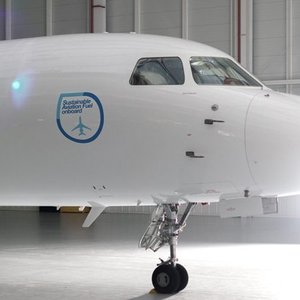Dassault: SAF to fuel flights leaving Little Rock, Arkansas

April 4, 2023
BY Dassault Aviation
All customer acceptance and departure flights from the Dassault Aviation completion facility in Little Rock, Arkansas, will use sustainable aviation fuel (SAF).
The use of SAF at this site is part of the SAF plan implemented by Dassault to reduce the carbon footprint of its aviation operations. Under this plan, all flights operated by company-owned Falcon aircraft, whether for business, transport or Falcon support, are using SAF blends.
Advertisement
Advertisement
SAF offers carbon emission reductions of 80 to 90 percent compared to conventional jet fuel when used in its concentrated form. All Falcon aircraft are certified to use up to 50 percent SAF blends. The new Falcon 10X ultra long-range twin will be compatible for a 100 percent SAF blend from entry into service.
Although the business aviation industry accounts for just a tiny proportion (0.04% percent) of worldwide CO2 emissions, it is helping lead the way in decarbonization, aiming for net zero emissions by 2050. SAF is currently the most promising contribution to meet this target.
Advertisement
Advertisement
The Little Rock plant is supplied with SAF by Avfuel Corporation and Neste, the leading fuel supplier and SAF producer, respectively, in the industry.
Related Stories
The European Commission on July 18 announced its investigation into biodiesel imports from China is now complete and did not confirm the existence of fraud. The commission will take action, however, to address some systemic weaknesses it identified.
Kintetsu World Express Inc. has signed an additional agreement with Hong Kong, China-based Cathay Pacific Airways for the use of sustainable aviation fuel (SAF). The agreement expands a three-year partnership between the two companies.
Broco Energy on July 17 announced a new partnership with the Massachusetts Port Authority (Massport) to deliver and transition Massport's fuel tanks to renewable diesel across its various facilities.
Shell Aviation, Accenture, and Amex GBT on July 10 announced Avelia is in the process of evolving to an industry solution with independent data hosting and a multi-supplier model helping users access the GHG benefits of SAF.
The U.S EPA on July 17 released data showing more than 1.9 billion RINs were generated under the RFS during June, down 11% when compared to the same month of last year. Total RIN generation for the first half of 2025 reached 11.17 billion.
Upcoming Events










